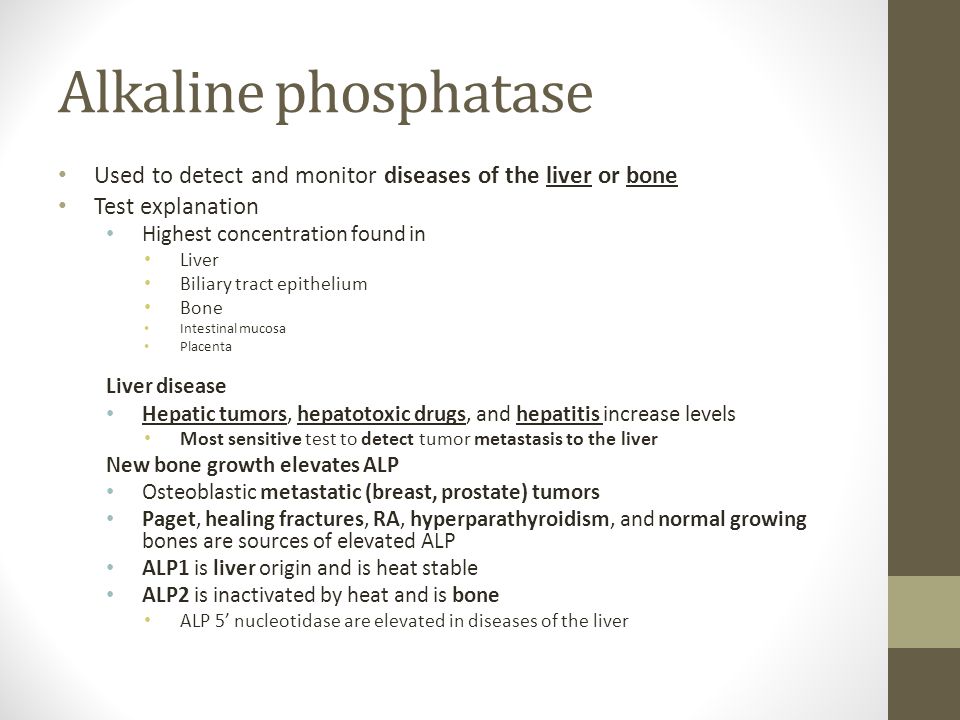Abnormal levels of ALP in your blood most often indicate a problem with your liver , gallbladder, or bones. However, they may also indicate malnutrition, kidney cancer tumors, intestinal issues, a pancreas problem, or a serious infection. The normal range of ALP varies from person to person and depends on . Liver ( liver ALP ):.
Сохраненная копия окт.

The ALP test may be used to help detect liver disease or bone disorders. If you show signs of liver disease or a bone disorder, your doctor may want you to get an ALP test to diagnose the problem. Tissues with higher amounts of ALP include the liver , bile ducts, and bone. A blood test can be done to measure the level of ALP. A related test is the ALP isoenzyme test.
Serum ALP is of interest in the diagnosis of main groups of conditions-hepatobiliary disease and bone disease associated with increased osteoblastic activity. A rise in ALP activity occurs with all forms of cholestasis, .

ALP ( alkaline phosphatase ) is an enzyme occurs mainly in liver cells near the bile ducts but is also present in bone. ALP is often measured as part of a routine liver profile test or may be requested with several other tests if a patient has symptoms of a liver , gallbladder, or bone disorder. ALP cytochemical staining in the liver.
A: ALP is normally found on the canalicular surface of hepatocytes. A description of alkaline phosphatase , a test for liver function (part of the Just Diagnosed lesson for patients), from the VA National Hepatitis C Program. I sometimes see an elevated phosphatase level when monitoring liver function tests for a statin protocol. This frequent testing has resulted in a dramatic increase in the number of normal and abnormal chemistry test that . Other liver function tests were unremarkable apart from an initial marginally elevated alanine transaminase, which normalised with weight reduction.
The function of alkaline phosphatase in the liver : regulation of intrahepatic biliary epithelium secretory activities in the rat. Alvaro D(1), Benedetti A, Marucci L, Delle Monache M, Monterubbianesi R, Di Cosimo E, Perego L, Macarri G, Glaser S, Le Sage G, Alpini G. To separate liver and . The presence of liver alkaline phosphatase in patients may indicate the presence of a tumor in the bile duct (R). An increase in AST levels may indicate liver damage or disease or muscle damage. ALP is an enzyme in the liver , bile ducts and bone.
Higher-than-normal levels of ALP may indicate liver damage or disease, such as a blocked bile duct, or certain bone diseases.

Albumin and total protein. These blood tests may also be called LFTs, liver panel or hepatic function tests. ALKALINE PHOSPHATASE. Alkaline Phosphatase.
The highest concentrations of ALP are located in cells of the liver , bones and bile ducts. ALP in the blood is primarily derived from excess ALP that is released from these cells. Blood levels of ALP are often measured as part of .